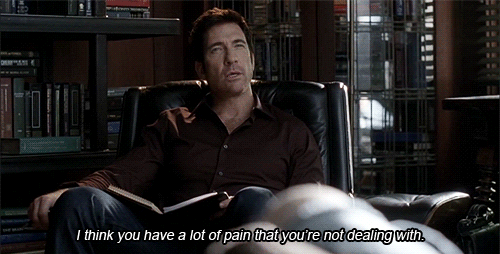4 Ways To Heal From Childhood Trauma That's Destroying Your Marriage
The goal is to be more flexible and less afraid.
 Getty
Getty Bill’s mother died suddenly of an aneurysm when he was 6 years old. Teresa was hit by a car when she was 10 and spent months in the hospital, often without any family support, frightened. Oliver’s parents divorced when he was 12 and he never saw his father again.
Trauma. The sudden event that explodes your life. A death. A tragic accident. In the aftermath, there is certainly the grief itself — the fear, the physical pain — but also the struggle to make sense of what happened.
Adults, of course, face the same challenge, but children do so with a handicap. They literally don’t have the fully functional, rational brain that the adult has. Their coping skills are limited and their view of the world is understandably myopic and self-centered.
I’ve talked with 8-year-olds who, when asked why their parents divorced, immediately said that it was because they didn’t finish their homework one night. Bill, Teresa, and Oliver are likely to feel the same way.
What a child does is make an unconscious or semi-conscious decision about what he or she needs to do to prevent this — whatever the "this" is, be it abandonment, pain, fear, or loss of control—from happening again.
Here are the most common options:
- "I take care of me." The world is unsafe. I can’t trust anybody, there’s me and there’s me, and I take care of me. I’m independent, some say self-sufficient. I don’t lean into relationships, I don’t open up and really let others in. Instead, I manage others by being good and accommodating.
- "I’m compliant and passive." The world is unsafe. I feel I have little control, and not much self-confidence, and so I decide I just need to go along with others. They know better than me, and sometimes when I'm overwhelmed, they help me out or tell me what to do.
- 'I need to stay alert." The world is unsafe so I need to be hyper-vigilant. I am always anxious, always looking for danger, always expecting the worst. A friend is late? He had a car accident. My boyfriend hasn’t called today? He is thinking of breaking up. People can misinterpret my anxiety as irritability, of being always on edge — because I am.
- "I need to be in control and I’m angry." The world is unsafe and so nothing is going to sneak up on me. I’m in charge and nothing happens unless I say so. People give me a hard time? I fight back. If I don’t agree, you’re going to know about it.
These stances, carved out of trauma, take hold. They work, in that they allow the child to move forward in life and heal from childhood trauma. The problem is that they linger and don’t work as well in the larger adult world.
An individual may marry but never form true intimacy in their relationship. Their passivity not only drives others crazy but keeps them from discovering their life. Their anxiety keeps them living in the future, their negativity overshadowing the positive, their overreactions disrupting their relationships. Or their anger dominates and they have control but are at war with the world.
The goal is to be more flexible and less afraid. Change can come in several steps:
1. Start by recognizing and taking a hard look at your stance and its limitations.

Tumblr
How do you view the world and how to cope with others? By doing this, you are not only being honest with yourself, but you begin to separate the past from present.
2. Get closure.

Photobucket
You want to begin to heal some from childhood trauma by trying to create closure, expressing what you could not express at the time. Try writing a letter saying what you could not say then. Then write a second letter, from them to you, saying what it is you most want them to say — that they are sorry, that it wasn’t your fault, that they loved you. Make the letters as detailed as possible, and allow yourself to write down whatever comes to mind.
3. Step outside your comfort zones and patterns.

Tenor
Time to be the grown-up rather than the frightened child. Experiment with stepping outside your comfort zone. Speak up rather than being passive, open up and lean in rather than being closed and isolated, focus on the present rather than constantly looking ahead to the frightening future, or experiment with letting go of anger and control.
4. Get support and help.

Tumblr
All of this is easier said than done, of course, and support and help are what you never really received. Here you may take the risk of seeking professional help to support and make those baby steps towards behavioral change; you may, on a therapist's advice, consider medication to help break the cycle. It's not about doing it right but doing it differently.
Be bold, be patient. What’s important is moving forward so you don’t have to keep always protecting yourself from danger, so you can lean into your life. To quote Benjamin Button: It’s never too late to be whoever you want to be...
.......
Bob Taibbi, L.C.S.W., has 40 years of clinical experience. He is the author of 10 books and over 300 articles and provides training, nationally and internationally.

